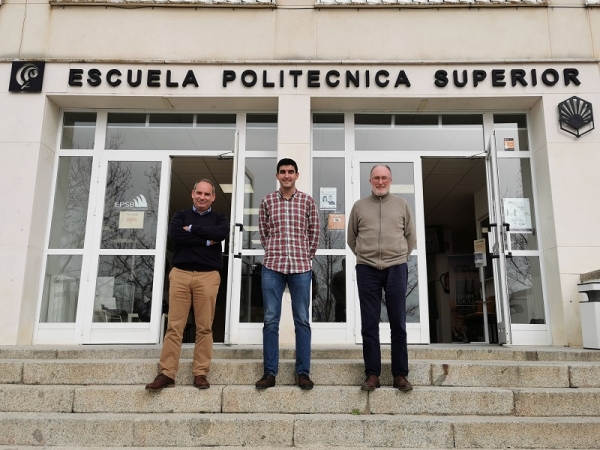The construction sector is a major source of carbon dioxide (CO2) emissions worldwide, to the extent that, according to estimates by the International Energy Agency, 8% of all global carbon dioxide emissions are related to the cement industry. Thus, the development of new sustainable building materials and processes is one of its great environmental challenges going forward.
A research project at the University of Cordoba has managed to dose concrete through a new procedure that removes carbon dioxide from the atmosphere, and thatcould be used for the manufacture of paving stones, curbs, vaults and other types of urban furniture without steel reinforcement. The study, carried out jointly at the Polytechnic School of Belmez by the 'Construction Engineering' (TEP-227) and 'Materials and Applications' (FQM-391) groups at the University of Cordoba, has developed a new recipe for this material, with two main ingredients: aggregates recycled from construction and demolition waste, and carbonated water, the typical refreshment consumed at many bars and restaurants.
According to the results of the study, published in the Journal of CO2 Utilization, the use of carbonated water, which is used to mix and cure the concrete, and the use of recycled aggregates,manages to capture 181% more carbon dioxide from the atmosphere compared to the use of natural aggregates and mixing with conventional water. This is, stressed researcher José María Fernández, one of the authors of the study, "a pioneering strategy that manages to mitigate climate change and is also based on the paradigm of the Circular Economy, in which waste and greenhouse gases are re-integrated into the manufacturing process."
When carbon dioxide is converted into stone
What is the role of carbonated water in this whole procedure? How is it possible that a certain material can decontaminate the atmosphere? The answer, as is often the case, lies in the chemistry behind the whole process and, in this case, in a chain reaction whereby CO2 is converted into stone: the carbonated water contains carbon dioxide, which, in turn, reacts with one of the cement components (portlandite) to form calcium carbonate. In other words, the carbon in the form of CO2 disappears from the atmosphere to adhere to the concrete itself, filling its pores, "which improves the strength and mechanical properties of the material," explains David Suescum Morales, the study's lead author.
This is a process called accelerated carbonation, a technique that, although in its early stages, previously could only be carried out in carbonation chambers, which are quite expensive, points out José Ramón Jiménez, another of the study's authors. The difference is that, now,the incorporation of CO2 can be implemented in the mixing process of concretes and mortars on-site through a cheaper procedure, without the need for these special carbonation chambers.
The work, thus,advances towards the achievement of one of the major aims of the cement industry, whose roadmap calls for reducing CO2 emissions2 and achieving climate neutrality. The study is also part of the PRECAST-CO2 research project (PID2019-111029RB-I00), funded by the Ministry of Science and Innovation.
Reference
David Suescum-Morales, José María Fernández-Rodríguez, José Ramón Jiménez. Use of carbonated water to improve the mechanical properties and reduce the carbon footprint of cement-based materials with recycled aggregates. Journal of CO2 Utilization. Volume 57, March 2022, 101886. https://doi.org/10.1016/j.jcou.2022.101886


